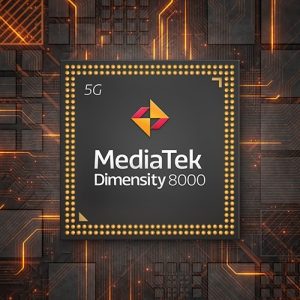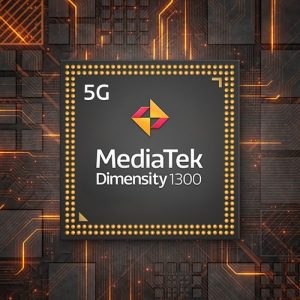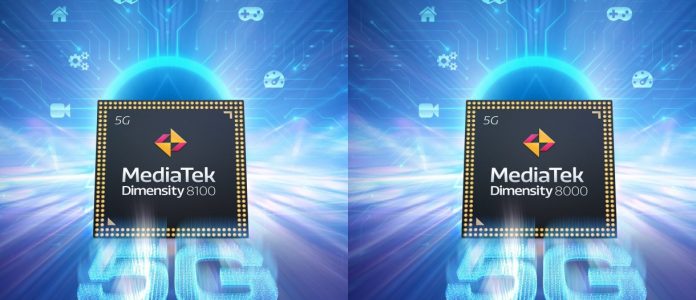MediaTek announced its high-end competitors – Dimensity 8000 and 8100 – to challenge Qualcomm in the flagship segment. Both chips are built around the same hardware in a 5 nm process. The 8100 is a winner with a higher clock speed. There is also the Dimensity 1300, an upgrade to the existing 1200 chip.
Each of the two 8000 chips has four Cortex-A78 big CPU cores and four A55 small ones. It uses ARM’s latest GPU architecture, the Mali-G610 MC6. Dimensity 8100 offers 20% more GPU frequency than Dimensity 8000. According to MediaTek’s testing, the 8100 achieved 170 fps in GFXBench Manhattan (offscreen), while the 8000 achieved 140 fps.
These two chips support a 168Hz refresh rate at FHD+ resolution with MiraVision 780. The 8100 chip supports 120Hz at WQHD+ as well. In addition to 4K AV1 video decoding, both models also support HDR10+ Adaptive.
Using the Imagiq 780 ISP, you can record HDR video simultaneously from two cameras at up to 5 gigapixels per second, or 4K 60 frames per second HDR10+ video from one camera. It supports cameras with up to 200 MP sensors, native lossless zoom of 2x, and AI-based noise reduction and HDR imaging.

In both chipsets, you will find 3GPP Release 16 modems with carrier aggregation for up to 200 MHz of bandwidth. The maximum download speed is 4.7 Gbps. Dual SIM with 5G+5G support is available in this modem.
Wi-Fi 6E (2×2) is supported locally, as is Bluetooth LE Audio with Dual-Link True Wireless Stereo. BeiDou’s B1C frequency is supported by positioning.

In terms of the Dimensity 1300, it’s nearly identical to 1200, the only improvement we saw was increased NPU performance which provides more number-crunching power for night mode and HDR processing.
As a result, expect to see a lot of launches in March from “some of the world’s biggest smartphone brands” powered by Dimensity 1300, 8000, or 8100 chipsets.






